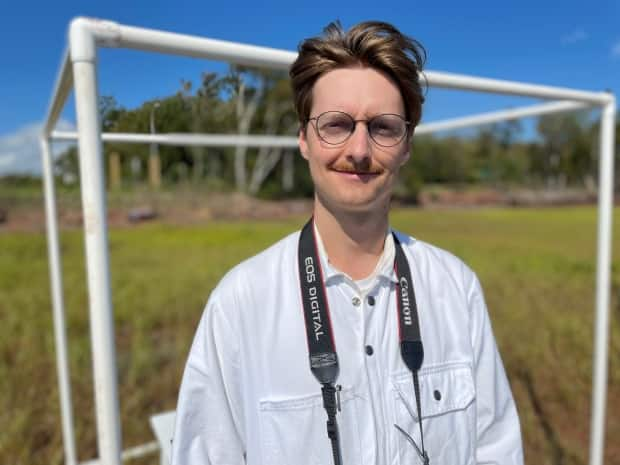Island artist capturing changing coast

P.E.I. artist Doug Dumais is spending the weekend in an open art studio on a part of shoreline near the Queen Elizabeth Hospital — snapping pictures of changes in the coastline for 12 hours on Saturday and Sunday.
He started the project during the summer when walls of concrete and stone were set up to prevent the water from eating away at the shoreline.
Now, those large slabs have been replaced with a natural shoreline buffer made up of logs, hay, wood chips and other biodegradable materials.
"I do see changes, you know, you see snails moving around, rocks shift, the tide comes in, erases everything and kind of starts again when it goes out," he said.
"Photographing it freezes these moments in time. It gives you a little bit of a time lapse, or a way to measure what is happening on a small scale."

Dumais is also writing poetry reflecting on climate change and coastal erosion.
"What I want to accomplish both through the images and the poetry is to show people these changes are happening on a micro-scale. But there are also changes happening on a really macro-scale, very long periods of time over hundreds of years or decades that are difficult to imagine.
"It's a way to make the changes happening around us very present."
He said many people have stopped by and told him stories about losing part of their property to the ocean.
He's printing the photos right on the shoreline using a portable printer. He writes poetry on the prints as he sits and observes inside an uncovered structure made of PVC pipe.
"The cube itself is kind of meant to be a kind of a frame, a delineating of space for creativity," he said.

He said he has seen an animal create a home in the new natural buffer. He said the concrete and stone walls make it more difficult for wildlife to navigate and inhabit the shoreline.
"Being here for 24 hours over a weekend I get to see an entire process of an out and in and out and in again of the tide."
Dumais hopes the project gets people thinking about the fragility of P.E.I.'s shores, he said.

 Yahoo Movies
Yahoo Movies 